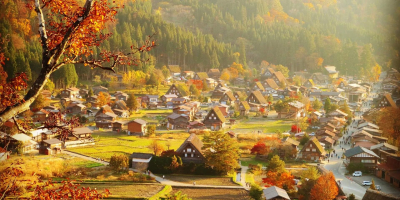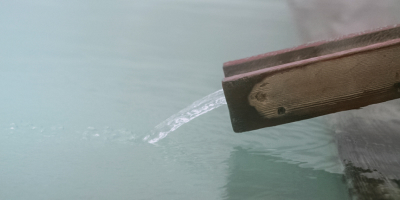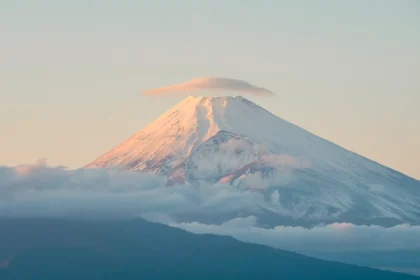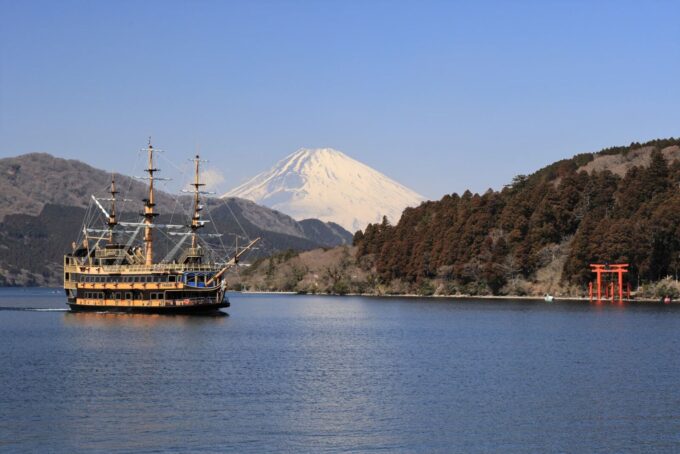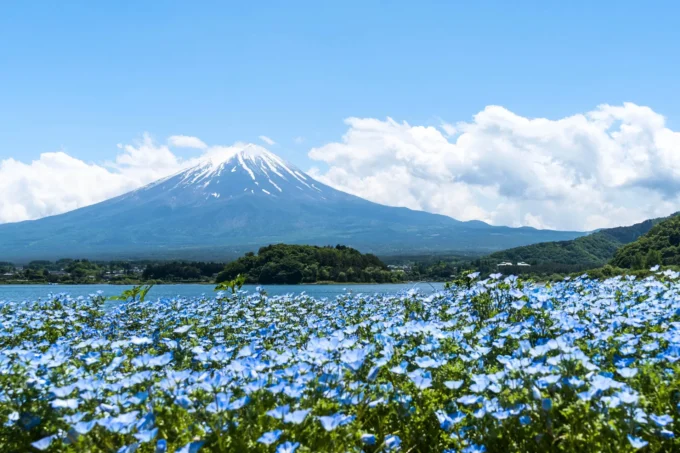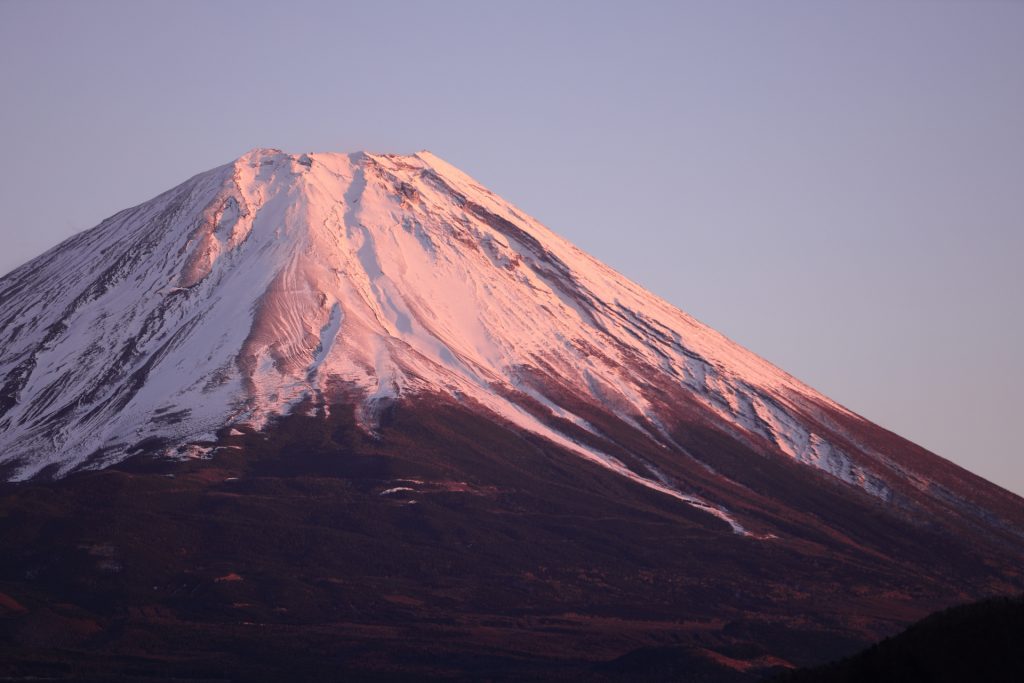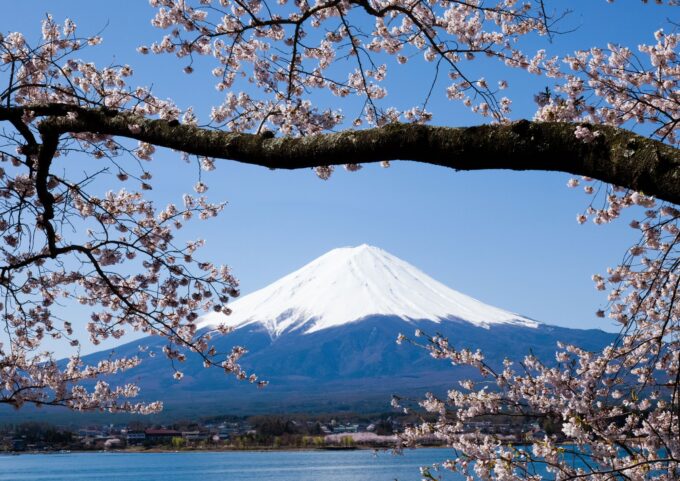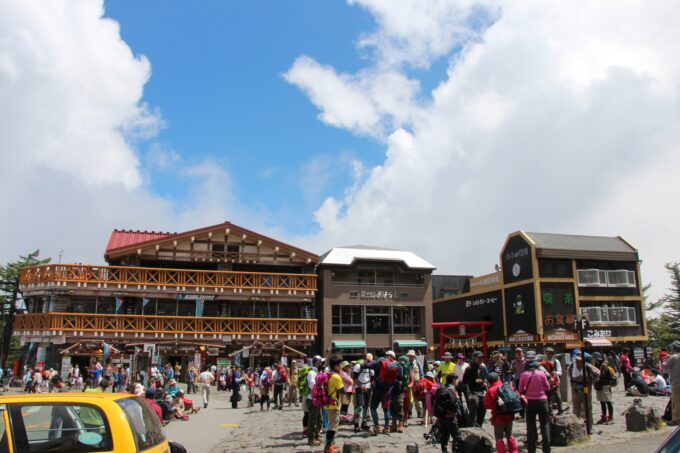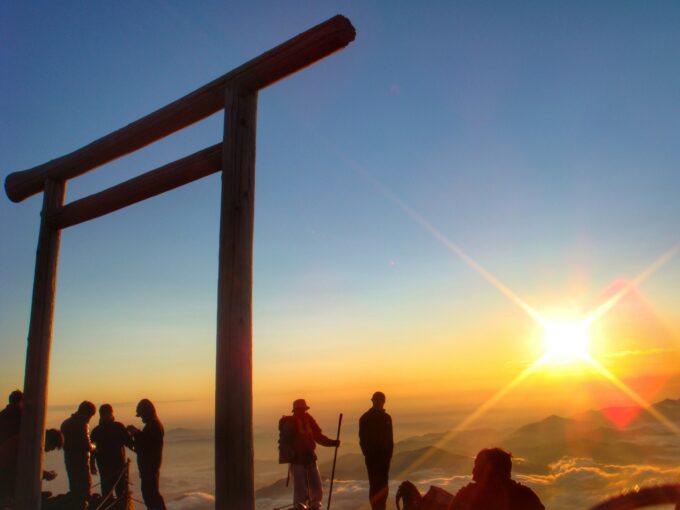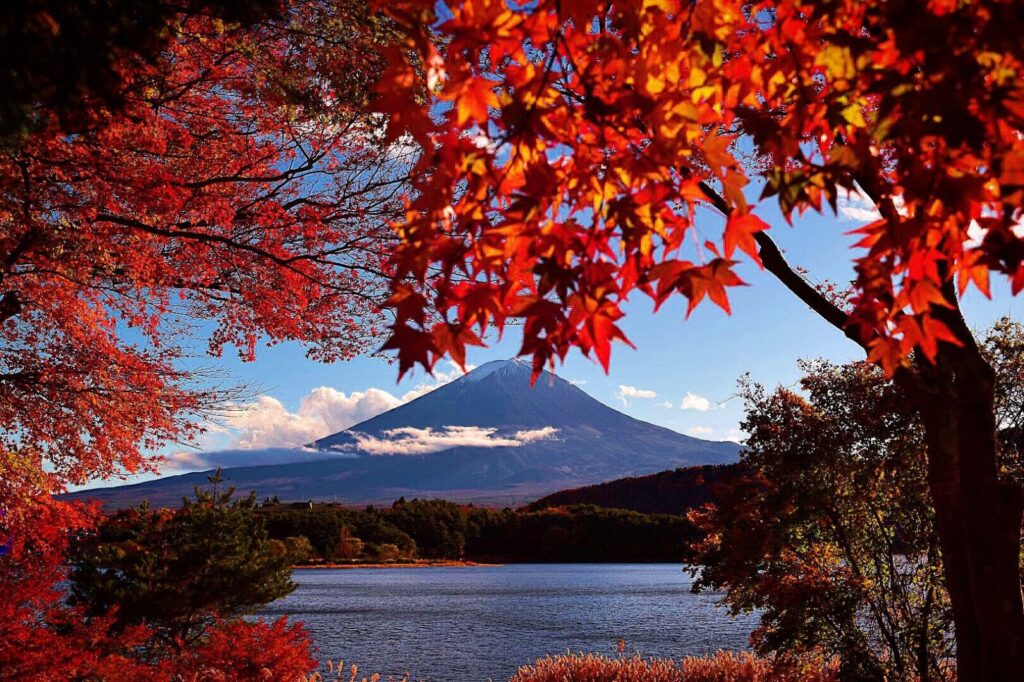
Autumn is a magical time for any temperate climate country, and Japan is no exception. Though maybe not as popular as its counterpart, spring, the changing of color for all of the leaves deserves to be up there right next to the plum and cherry blossoms here in Japan. I'm sure anyone familiar with the sanguine color of the maple trees and gold ginkgo will agree.
As the air turns crisp and the days grow shorter, the area around Mount Fuji transforms into a breathtaking canvas of red, gold, and amber. Autumn is one of the most beautiful times to visit Japan’s legendary mountain, when fiery maple leaves and golden ginkgo trees frame the mountain in stunning contrast. Check out our page on how to make your getaway to this wonderful location from the surrounding areas and our article on what to do!
Planning your autumn escape outside of Tokyo's concrete jungle? Here's your essential guide to our top recommendations for experiencing the stunning fall foliage near Mt. Fuji:
1 - Lake Kawaguchi (Kawaguchi-ko)
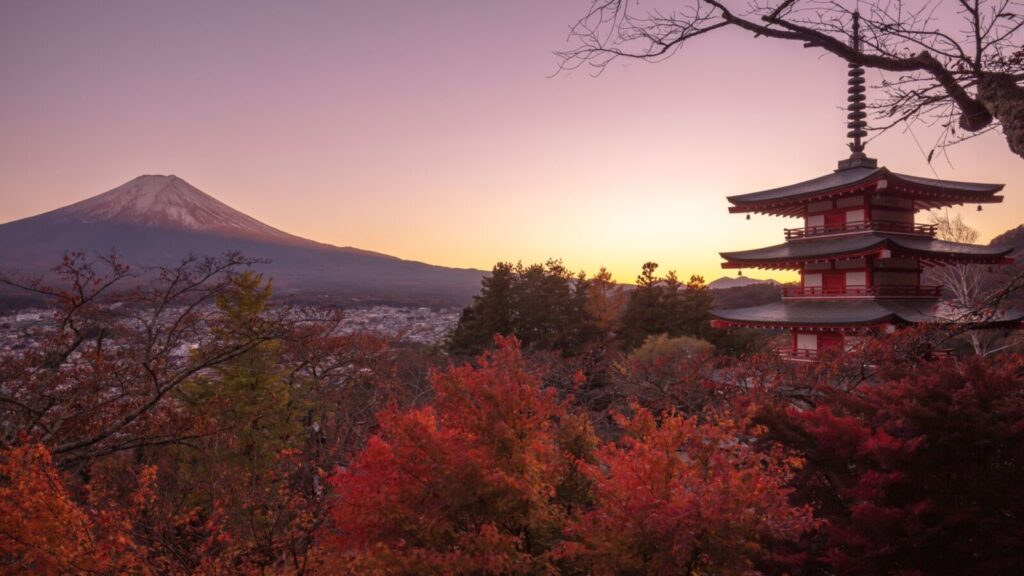
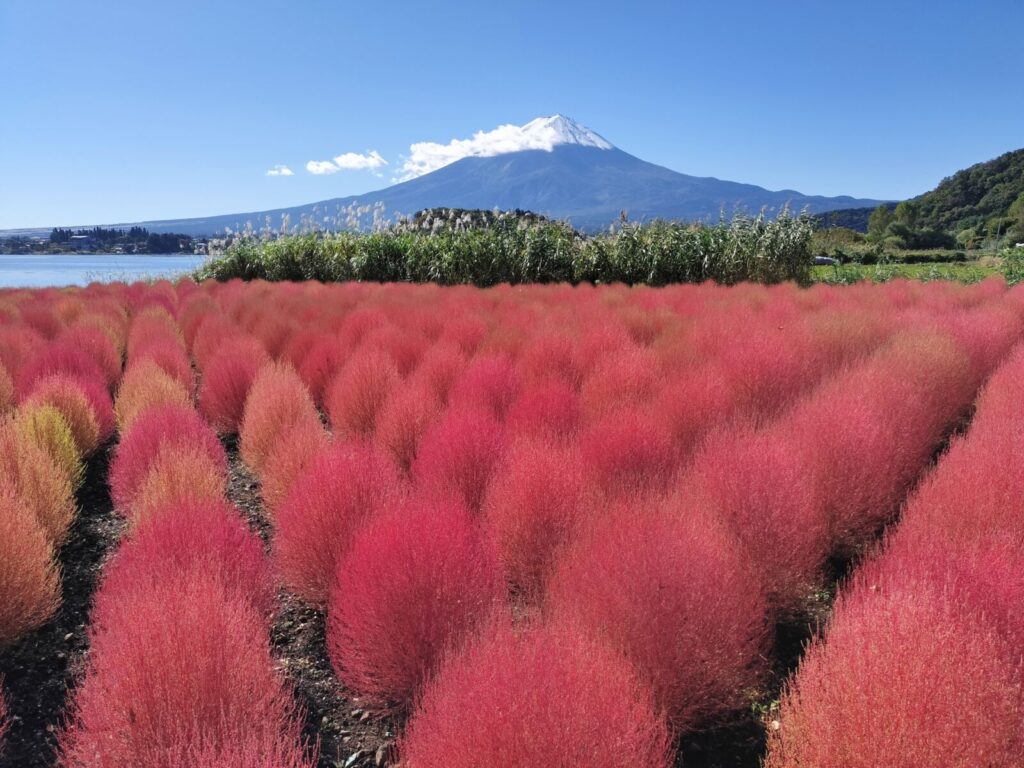
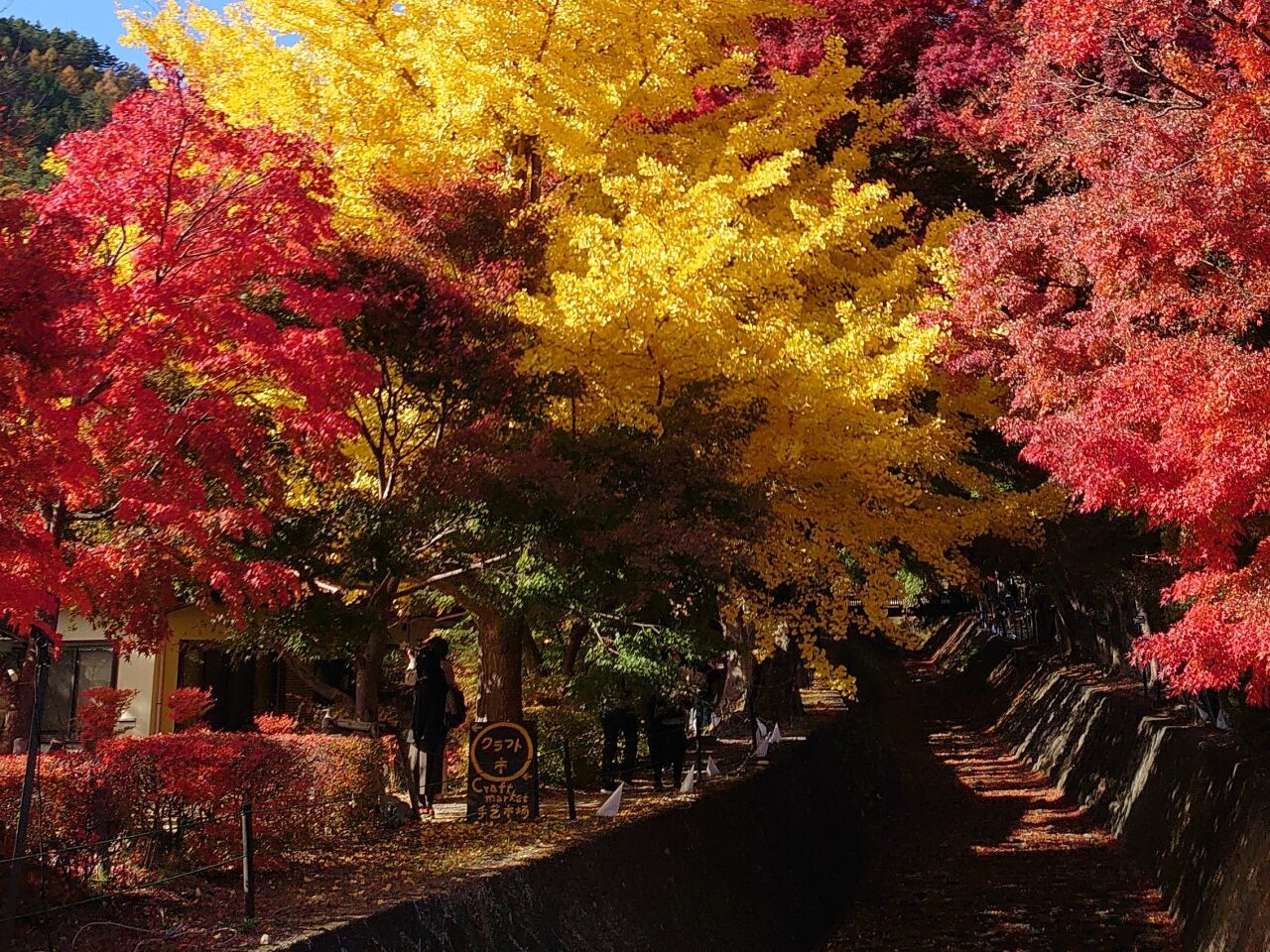
Best viewing time: late October to late November
Highlights:
- Arakura Sengen Shrine / Chureito Pagoda
- Panoramic Ropeway
- Oishi Park
- Momiji Corridor
- Autumn Leaves Festival
- Momiji Tunnel
Lake Kawaguchi is Mt. Fuji's most popular lake and destination area. The Arakura Sengen Shrine area, just on the outskirts of the lake in Fujiyoshida, is home to the Chureito Pagoda which is featured in many photos of Mt. Fuji. Once in Fujiyoshida, the shrine is a short walk from the Shimoyoshida Station on the Fujikyuko line. Once at the shrine, the pagoda is a short walk up the hill. After that, you can hop back on the train and head towards Lake Kawaguchi for more stunning shots of Mt. Fuji. Not far from Kawaguchi-ko Station is the Mt. Fuji Panoramic Ropeway which offers stunning views of the whole mountainside from inside the cabin and the observation deck that is over 200 meters above the lake.
Another location that we recommend in the area is Oishi Park located on the northern shore. Oishi Park is famous for its Kochia (summer cyprus) bush. These bushes are known for their playful round shape and fluffy texture. They add a refreshing break from the usual maple and ginkgo autumn leaves. However, if you still want more Japanese maple, there is a popular "momiji corridor" that is home to 400 - 500 maple trees. It is just a 10 minute bus ride or 25 minute walk away from Oishi Park. This area is the center for the Kawaguchi-ko autumn leaves festival that takes place from early to mid-November. During this festival, there will be night illuminations of the trees, street food stalls, and various activities.
There is also a famous section of the road Rt. 21 around the lake that is called "Momiji Tunnel". Maple trees line the sides of the road and through them you can catch glimpses of Mt. Fuji. An example of such a scene would be the very picture used at the head of this article!
Want to experience the beauty of Mount Fuji for yourself? Check out our recommended tour where one of our local guides takes you around the beautiful Lake Kawaguchi and more!
2 - Lake Yamanaka (Yamanaka-ko)


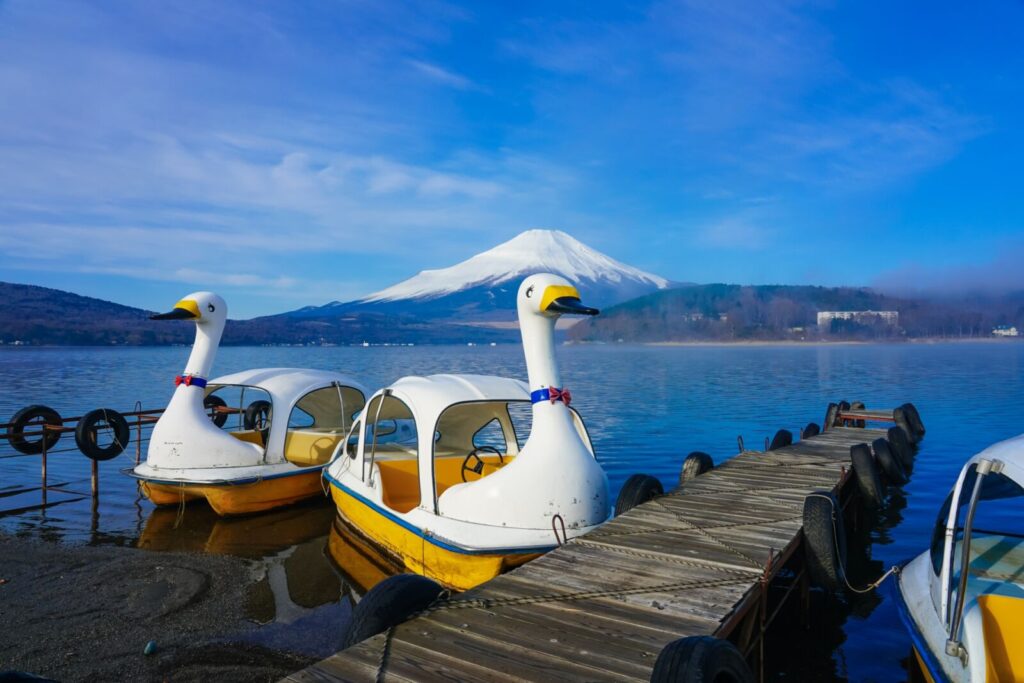
Best viewing time: late October to late November
Highlights:
- Asahigaoka Lakeside Park
- Hana no Miyako Park
- Panorama-dai Lookout
- Autumn Leaves Festival
Lake Yamanaka is located just off the east of Mt. Fuji and is the largest of the five lakes. Surrounding this pristine lake are beautiful hotels and ryokans, spas and onsen (hot springs), and quaint eateries. Running along around 80 percent of the lake's circumference is a cycling path that offers great views of Mt. Fuji. While walking or cycling around the lake, you can enjoy stops at both Asahigaoka Lakeside Park and Hana no Miyako Park. Asahigaoka Park offers the traditional autumn leaves viewing experience of ginkgo and maple leaves, but Hana no Miyako Park is a little different. Staying true to its name "Hana", meaning flower, this park is dedicated to seasonal flowers. In the late summer and early autumn, it is home to all hues of pink, purple, and white cosmos flowers as well as zinnias. It boasts approximately 150,000 tulips in spring, sensational sunflowers in August.
Not to be outdone by its sibling, Lake Kawaguchi, Lake Yamanaka also hosts its very own festival in the autumn. The festival takes place at Asahigaoka Lakeside Park and boasts a 1,000 meter-long corridor filled with maple trees. This festival also has night illuminations and food trucks and stalls that offer familiar foods as well as local cuisine and drinks!
This lake also has a panoramic lookout which is aptly named Panorama-dai. This lookout is poised over 1,000 meters above sea-level and is one of the "Fuji Hakkei", meaning "eight views of Fuji". Sunrise and sunset are astonishing year-round, but in autumn it gets a sublime supporting cast in the way of pampas grass, also known as "susuki". During its peak in mid-October, the fields on Mt. Mikuni are transformed into waves of light gold due to the arrival of the pampas grass.
3 - Lake Saiko (Saiko-ko)
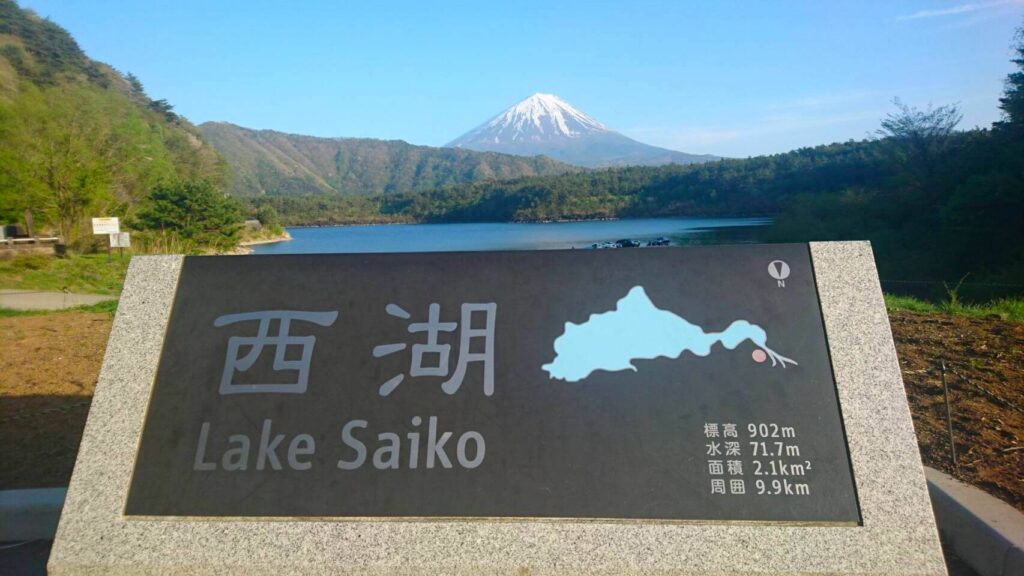

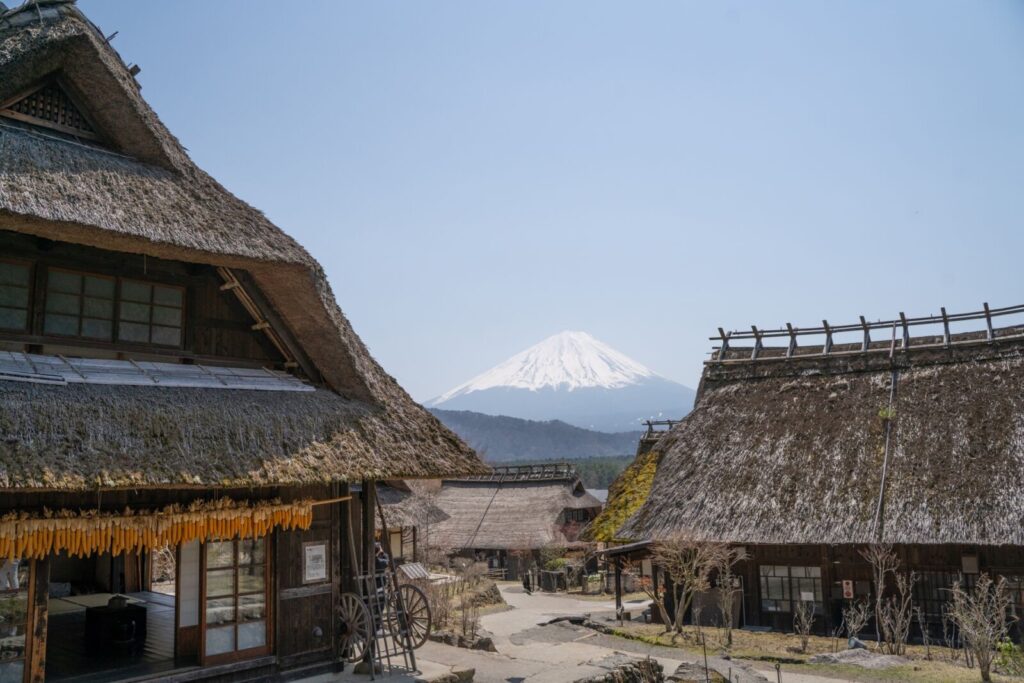
Best viewing time: late October to late November
Highlights:
- Koyo-dai Lookout
- Sanko-dai Lookout
- Saiko Bird Forest Park & West Lake
- Saiko Iyashi no Sato
Lake Saiko is a much less developed area compared to the previously mentioned lakes in terms of tourism, but don't let that stop you from making your way out here. Though most views of the majestic Mt. Fuji are blocked by surrounding mountains, you can still enjoy the autumn leaves. The popular locations offering both a view of autumn leaves and Mt. Fuji being Koyo-dai Lookout, Sanko-dai Lookout, the Bird Forest Park, and Saiko Iyashi no Sato. Both of the lookouts offer stunning views but require some walking or hiking to reach. Another option is to head to the wild bird park where you can take a relaxing walk and enjoy the leaves while also trying to catch a glimpse of the birds.
Another area that is perhaps a little less focused on the leaves themselves is Saiko Iyashi no Sato. This is a craft village that has thatch-roof styled houses and offers workshops of different crafts. This is a great area if you are looking for more activities to really get everything out of your Japan trip while also enjoying the autumn leaves. This area is also home to lava caves that were formed during past eruptions that you can visit.
4 - Lake Shoji (Shoji-ko)
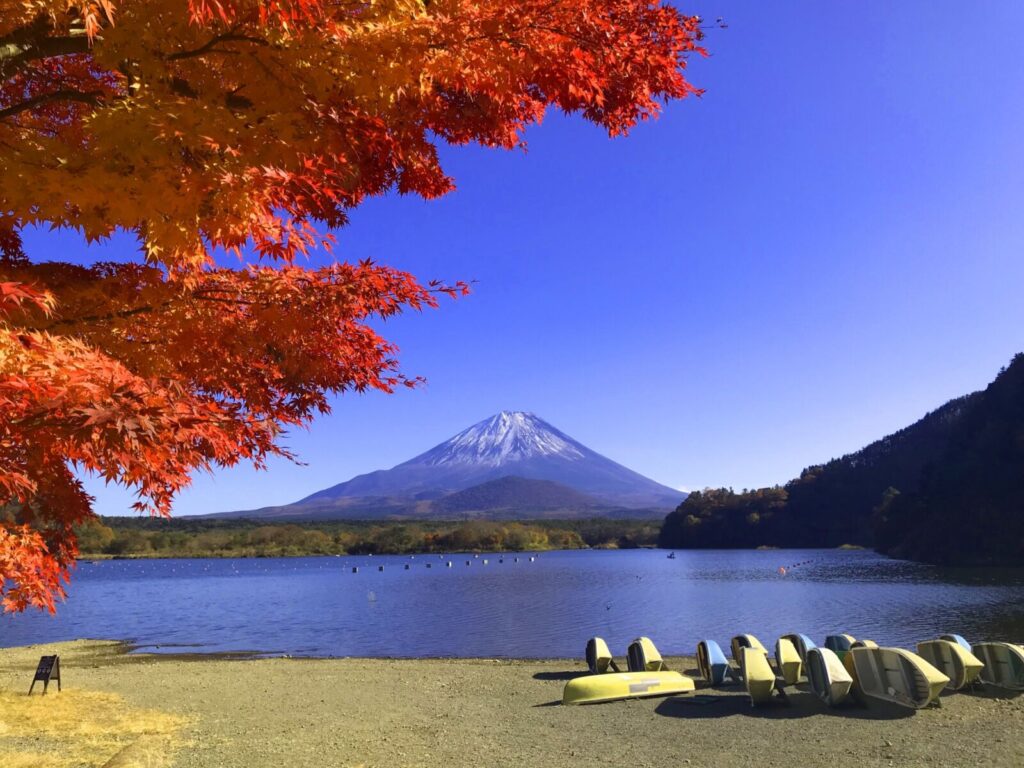
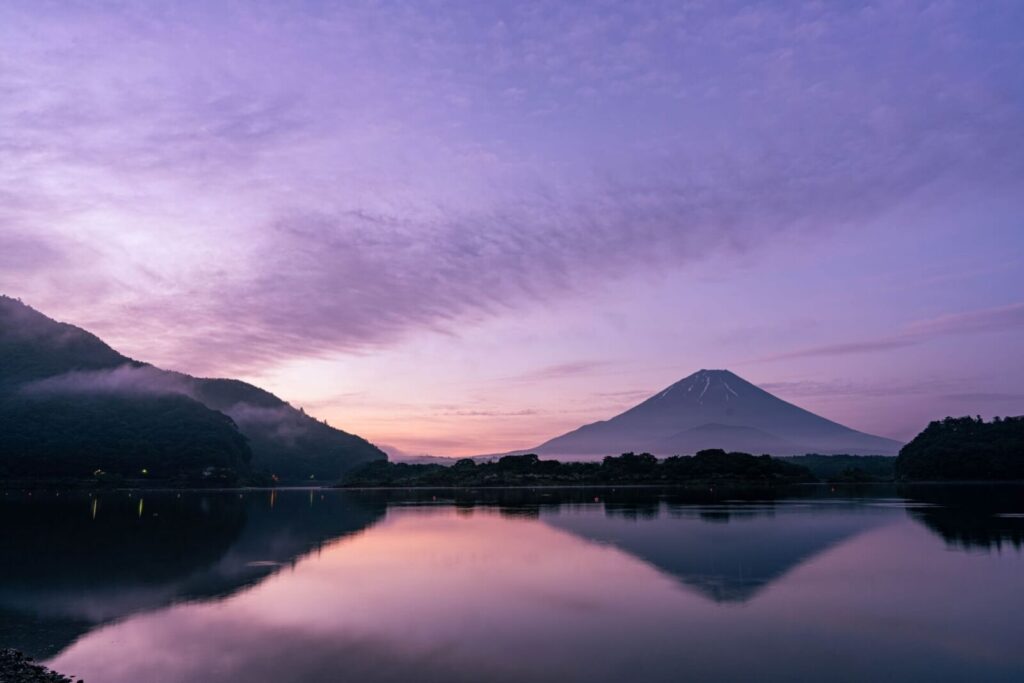
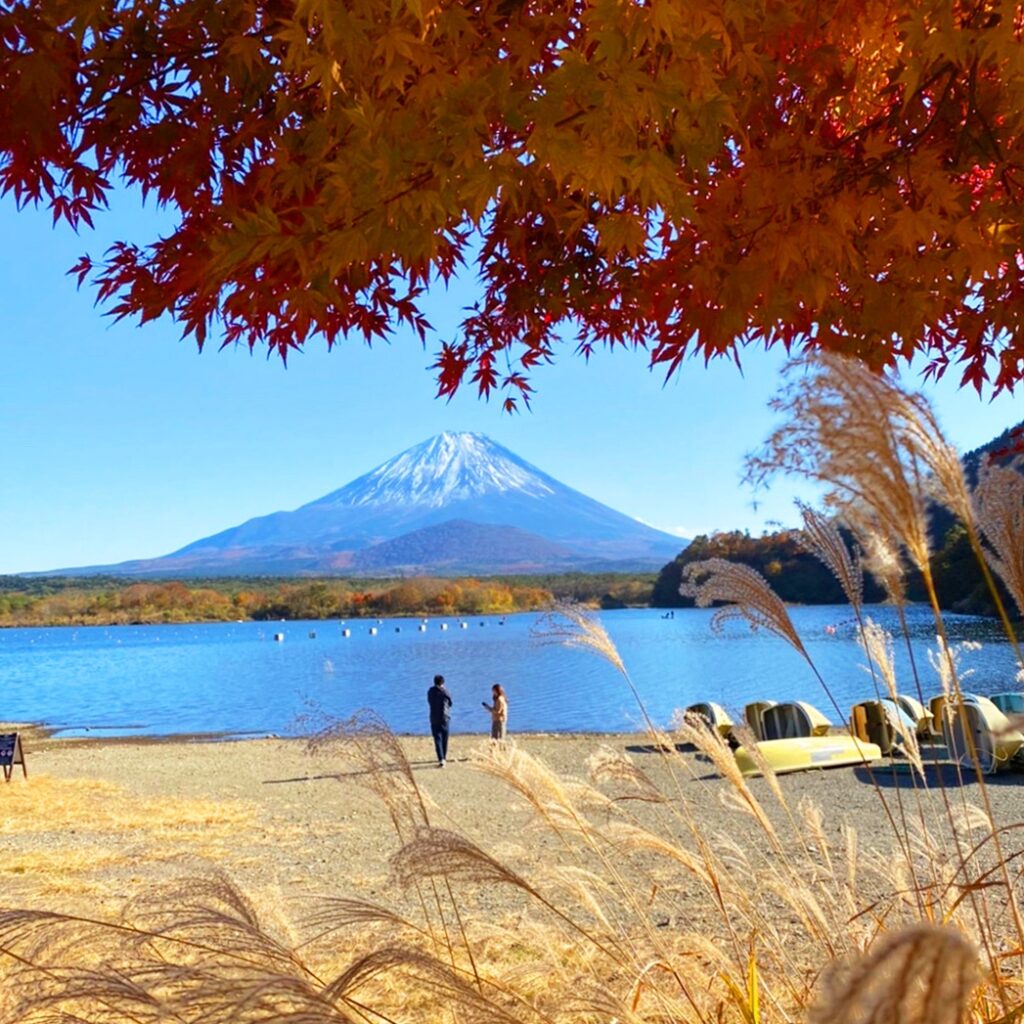
Best viewing time: late October to late November
Although it is the smallest of the lakes and not very popular, we feel that Lake Shoji also deserves a mention. This lake offers a much more quiet and peaceful destination for those looking to get away from it all and slow down. Take in the views of Mount Fuji surrounded by the autumn leaves and "susuki", or the orange hues of sunrise and purples during the sunset.
How to get to Mount Fuji

Looking to explore this wonderful area at your own pace? Be sure to check out our page on how to get to Mount Fuji from popular places such as Tokyo, Nagano, Kyoto, and more!
Frequently Asked Questions
Where is a good day trip to see autumn leaves outside of Tokyo?
There are many great places to see autumn leaves outside of Tokyo, but it will depend on how much time you have and your budget. The Mount Fuji Five Lakes area is a great place to get out and into nature around that time. Other great spots are Hakone and Nikko. Check out our guide on Hakone autumn foliage and Nikko autumn foliage.
When is the best time to see autumn leaves near Mount Fuji?
The best time to see autumn leaves near Mount Fuji is late October to late November. Sometimes the timing changes due to weather factors, but this is generally a good window. Mid November is when most areas are at their peak.
What should I wear or bring for a comfortable autumn foliage trip in the area?
Wear layered clothing, including a light jacket or sweater, as temperatures can vary throughout the day. In November, temperatures tend to hover near 15°C in the daytime, cooling down to around 5°C at night. An umbrella may also come in handy as this receives over 200mm of rain in October. And as always, comfortable walking shoes, a camera, and possibly a thermos or snacks are also recommended.
Final Tips for Visiting in Autumn
- Book accommodation and tours in advance—fall is a peak travel season.
- Don't forget to check operating hours of every facility you may be visiting. Open hours often change based on season or public holiday
- Bring layers! Temperatures can shift quickly, especially in mountainous areas.
- Consider combining a leaf-viewing trip with onsen (hot springs) or a local food tour for the full autumn experience.






